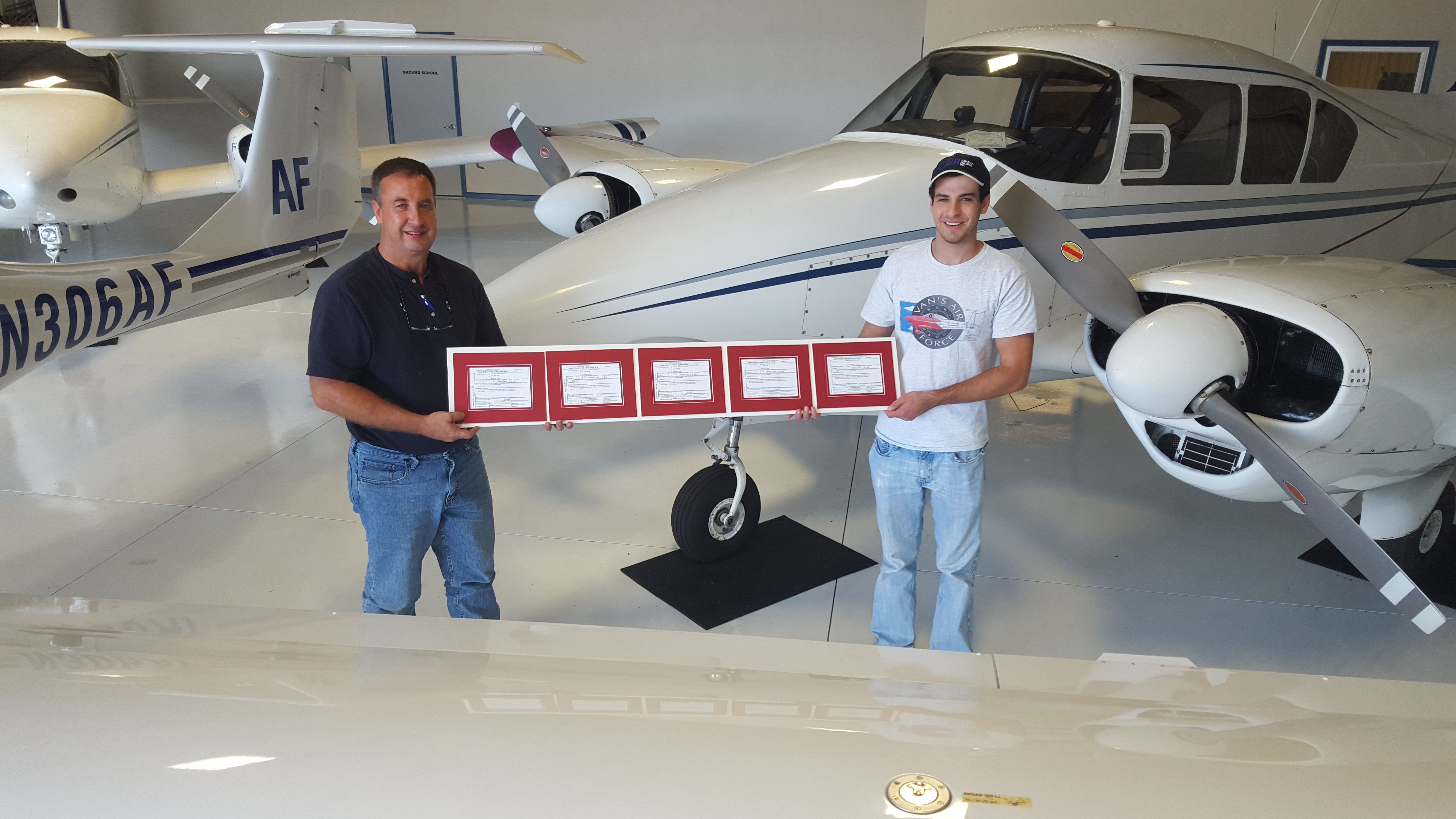
A young pilot took some major steps toward his dream of flying for a living by earning three individual pilot certificates and two type ratings, all in a 48 hour period. But before Preston Allen, a 24-year-old private pilot with 1,200 hours, could earn each piece of paper, he had to crack the books. “He’s a very motivated and very hard-working young guy,” said flight instructor Dan Gryder, who oversaw the process. In researching the FAA regulations, Gryder said it was Allen who discovered a lot of overlap in the experience and flight time requirements for commercial, instrument, and multi-engine ratings. Then he designed a training path that in some ways was directly opposite to the usual way of progressing through the ratings. For instance, he got his initial instrument rating in a multi-engine airplane, and then his initial commercial certificate in the light twin, all before he got his single commercial. The multi-IFR automatically gave him an IFR rating for singles (but the opposite isn’t true) and getting the multi-commercial ticket paved the way for a truncated flight test to get his single commercial. Allen also got second-in-command ratings for the DC-3 and Citation 500. “When he first approached me about it I didn’t think it was possible,” Gryder said, noting Allen’s persistence paid off in his office and in the air. “It took him 60 days to convince me to do this in 30 days.”
To keep costs down, Allen did most of the 70 hours of flying in a single, but he also had access to a Redbird simulator. While only 10 hours of sim time can be counted toward an instrument rating, there is no limit to how much unlogged practice time can be spent rehearsing. Allen spent most evenings alone shooting approaches in the multi-engine configured sim, where he gained a real advantage over the traditional path. The local DPE was cooperative and conducted the tests in the odd order and Allen passed all three checkrides given back to back. Gryder stressed that no corners were cut and all knowledge and flight requirements were met, yielding a better product in less time, and at a lower cost. He said the innovative approach could be used by individuals and flight schools to lower the cost of advanced flight training. Accumulating these three ratings in the traditional method could cost $100,000 or more but Gryder said this “full immersion, multi-first” style of training drastically reduced that. “You can think of it as a lean of peak approach for flight training. It really makes a lot of sense once you stop and think about it,” he said.


































